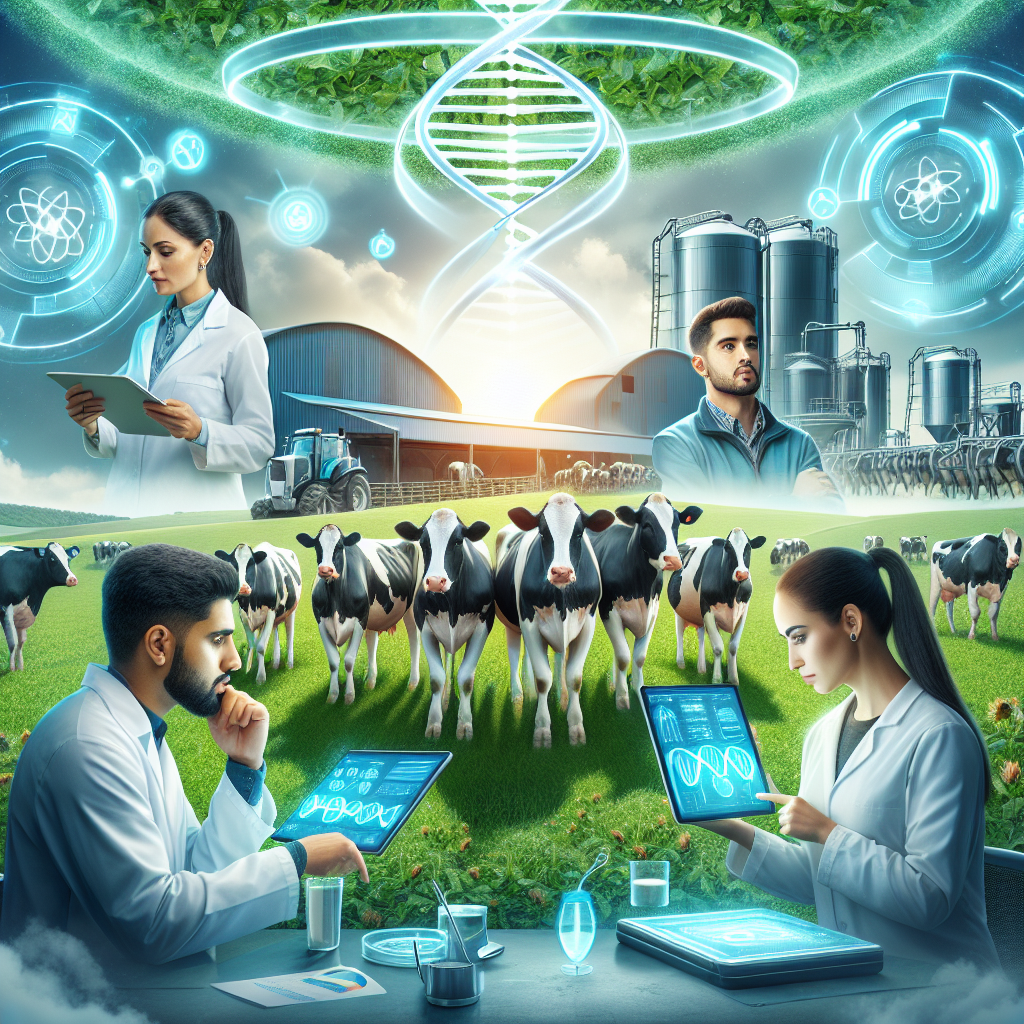In the heartland of America, a genetic revolution is quietly reshaping the future of dairy farming. At its epicenter stands GenoSource, a family-owned enterprise that has catapulted from a modest 2,200-cow operation in 2014 to a cutting-edge 4,000-cow powerhouse. Led by visionary CEO Tim Rauen, this Iowa-based dairy isn’t just milking cows—it’s engineering the perfect bovine, one embryo at a time.
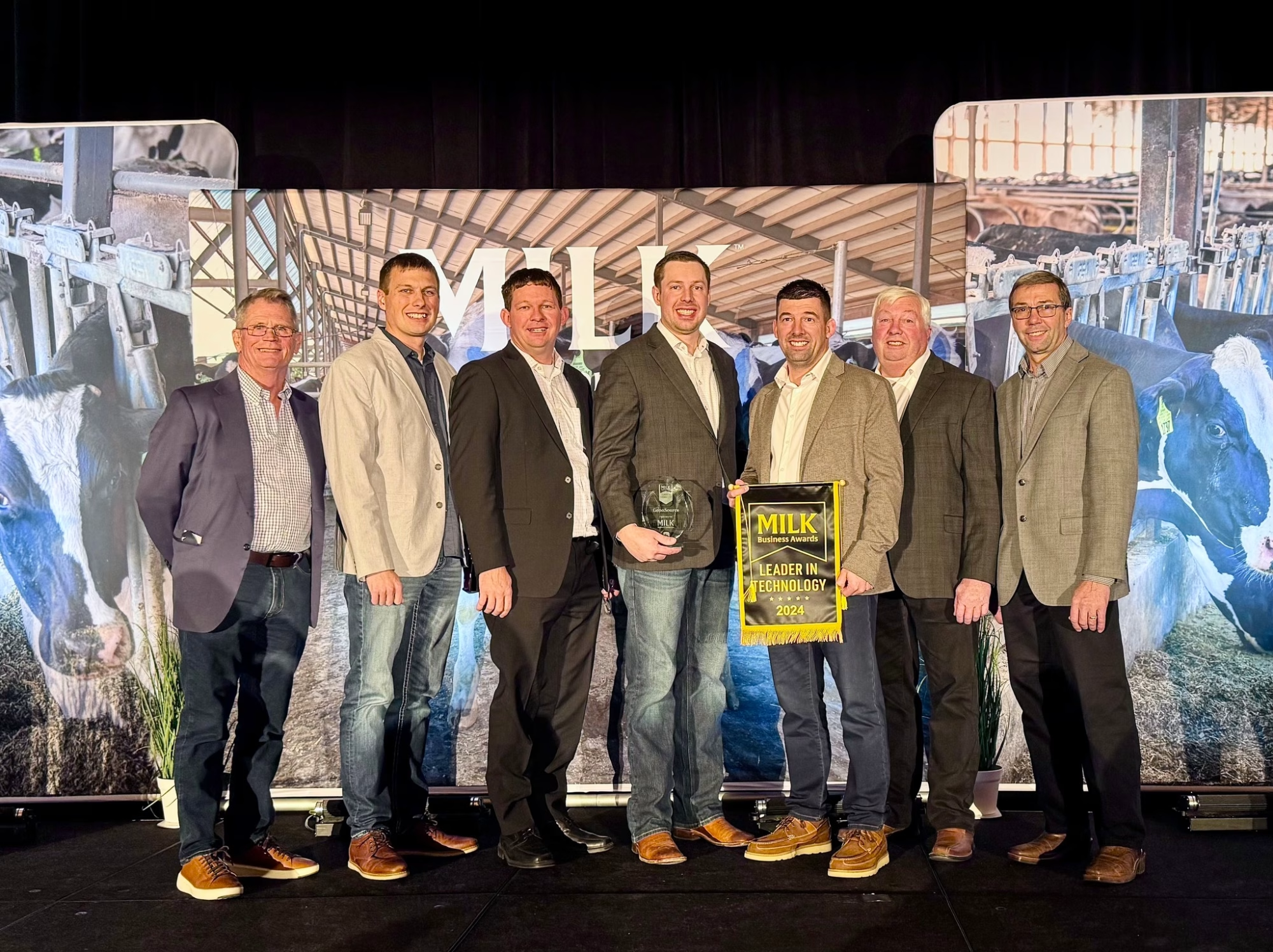
Picture this: a farm where cows average a staggering 93 pounds of milk per day, with butterfat content that would make a butter sculptor weep, where artificial intelligence predicts the perfect mating years before traditional methods could even conceive of the possibility. A single bull aptly named Captain has rewritten the genetic playbook so thoroughly that he’s become a legend in his own time.
Welcome to GenoSource, where science fiction meets the milking parlor, and the future of dairy is crafted one groundbreaking innovation at a time. Buckle up because this isn’t your grandfather’s dairy farm—it’s a glimpse into a world where genomics, sexed semen, and in vitro fertilization are transforming how we produce milk and the very nature of the cows.
The Genesis of a Genetic Revolution
Nestled among the rolling fields of Iowa, GenoSource began as a bold experiment in collaboration. In 2014, eight farming families—each with deep roots in dairy—came together, pooling their resources and genetic expertise to create something revolutionary. “We each had promising genetic lines,” recalls CEO Tim Rauen, “but combining them created something exponentially greater.” And more significant, it was. From this union emerged a dairy powerhouse that has redefined what’s possible in modern milk production.
At its core, GenoSource’s mission was simple yet ambitious: to develop cows that thrive in free-stall environments while producing unparalleled milk solids. Today, their herd averages an astonishing 93 pounds of milk per day, with butterfat and protein levels of 4.8% and 3.6%, respectively—numbers that have set new benchmarks in the industry. But these achievements didn’t come by chance; they resulted from meticulous planning and a shared vision among the founding families.

A Partnership Built on Precision
The partnership behind GenoSource wasn’t just about pooling assets—it was about assembling a dream team with complementary skills. Tim Rauen took the reins as CEO, leveraging his passion for genetics and expertise in risk management to guide the farm’s breeding strategies. Meanwhile, COO Kyle Demmer focused on the day-to-day operations, ensuring herd health and productivity remained top priorities. CFO Matt Simon rounded out the leadership trio, steering financial strategy and diversification efforts to keep GenoSource on solid ground.

This well-oiled machine has allowed GenoSource to grow exponentially, managing 4,000 cows while maintaining 100% family ownership. “It’s not just about business,” says Rauen. “It’s about preserving our values and staying true to our beliefs.”

Challenges Along the Way
Of course, building a genetic empire wasn’t without its hurdles. Combining eight families to start a business required trust, compromise, and an unwavering commitment to a shared goal. But these challenges only strengthened their resolve. By aligning their efforts and focusing on long-term results rather than short-term gains, the Carroll, Simon, Rauen & Demmer families laid the groundwork for what would become one of the most innovative dairies in the world.
A Legacy in the Making
From their humble beginnings to their current status as industry leaders, GenoSource’s story is one of vision, collaboration, and relentless pursuit of excellence. Their success proves that even the loftiest goals can become reality when passion meets precision. Tim Rauen says, “We had a vision, and with our team, we knew we could accomplish something great.” GenoSource has been transformative, leaving an indelible mark on the dairy industry while setting the stage for an even brighter future.

Engineering the Perfect Bovine
GenoSource’s air hums with the quiet buzz of innovation as cutting-edge technology melds seamlessly with generations of dairy farming wisdom. Here, in a landscape dotted with silos and rolling fields, the future of the Holstein breed is being sculpted one embryo at a time.
GenoSource’s technological triad—genomic testing, sexed semen, and in vitro fertilization (IVF)—forms the backbone of its genetic acceleration program. It’s a symphony of science and nature, each element playing its crucial part:
- Genomic testing sifts through the genetic code of 1,500 bull candidates annually, identifying the crème de la crème—the top 13% who will shape the breed’s future.
- GenoSource sells about 1000; GenoSource and their partners implant 17,000. They aim to have a percentage of 35% living calves born, about 2000 bulls and 4000 heifer calves annually.
- Sexed semen ensures that over 90% of conceptions from elite lineages result in female calves, rapidly expanding the farm’s genetic pool.
- IVF takes center stage in the 250-donor program, producing a staggering 18,000 embryos yearly from superior dams.
But GenoSource isn’t content with resting on its laurels. Artificial intelligence now augments these systems, peering into the genetic crystal ball to predict optimal matings years before traditional methods could even conceive of the possibilities.
The Delicious Legacy
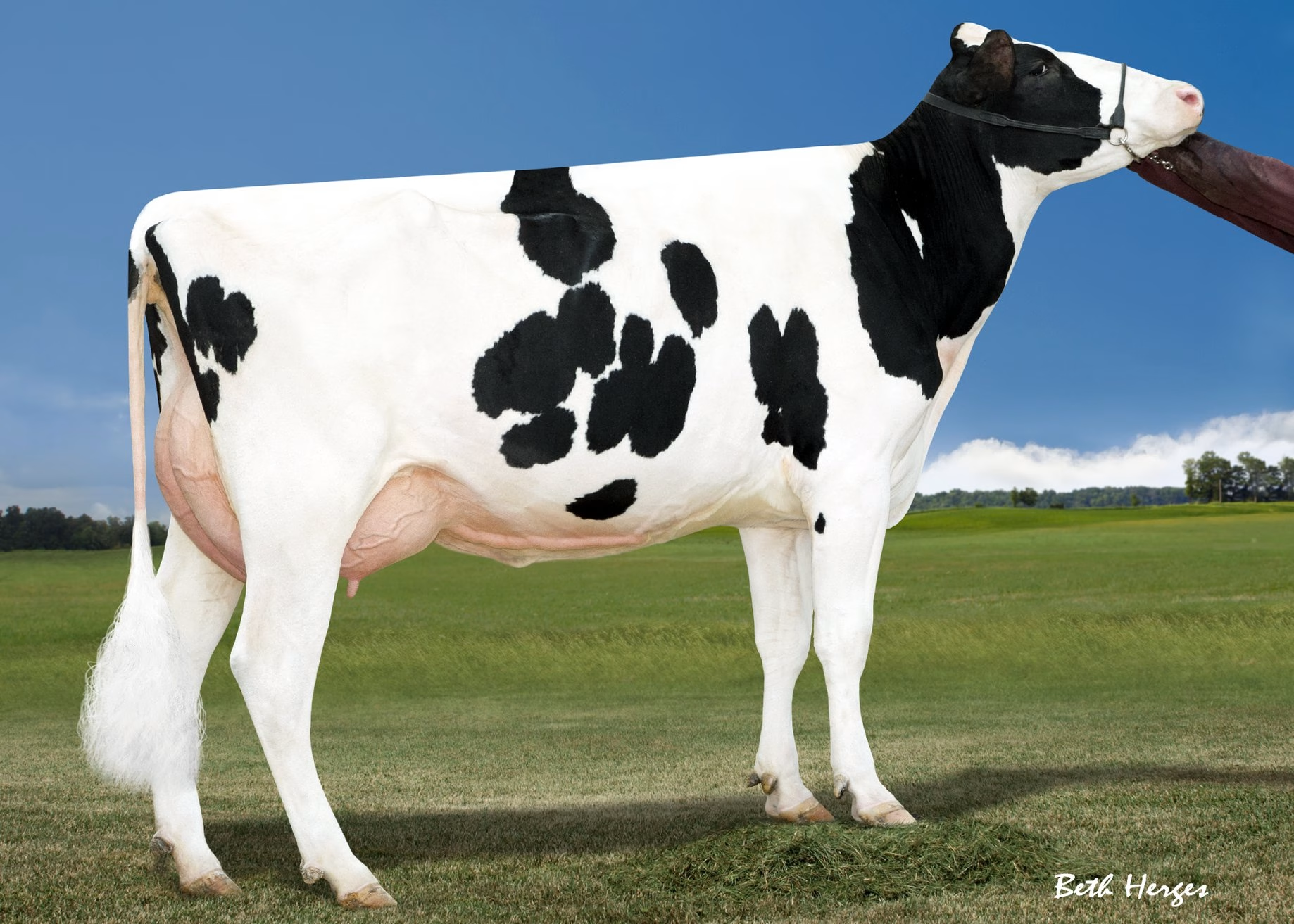
One name stands above the rest in elite dairy genetics: Miss OCD Robust Delicious. At 14 years old, this bovine matriarch defies expectations, contributing valuable embryos to GenoSource’s program. Tim Rauen, his voice filled with reverence, explains, “She redefined what’s possible in mammary structure and feed efficiency.”
Delicious isn’t just a cow; she’s a dynasty. Her genetic fingerprint is currently found in the Top 25 GTPI sires of the breed, a testament to her enduring impact on the breed. In an industry where youth often reigns supreme, Delicious proves that longevity and productivity can go hand in hand.
Captain of the Genetic Ship
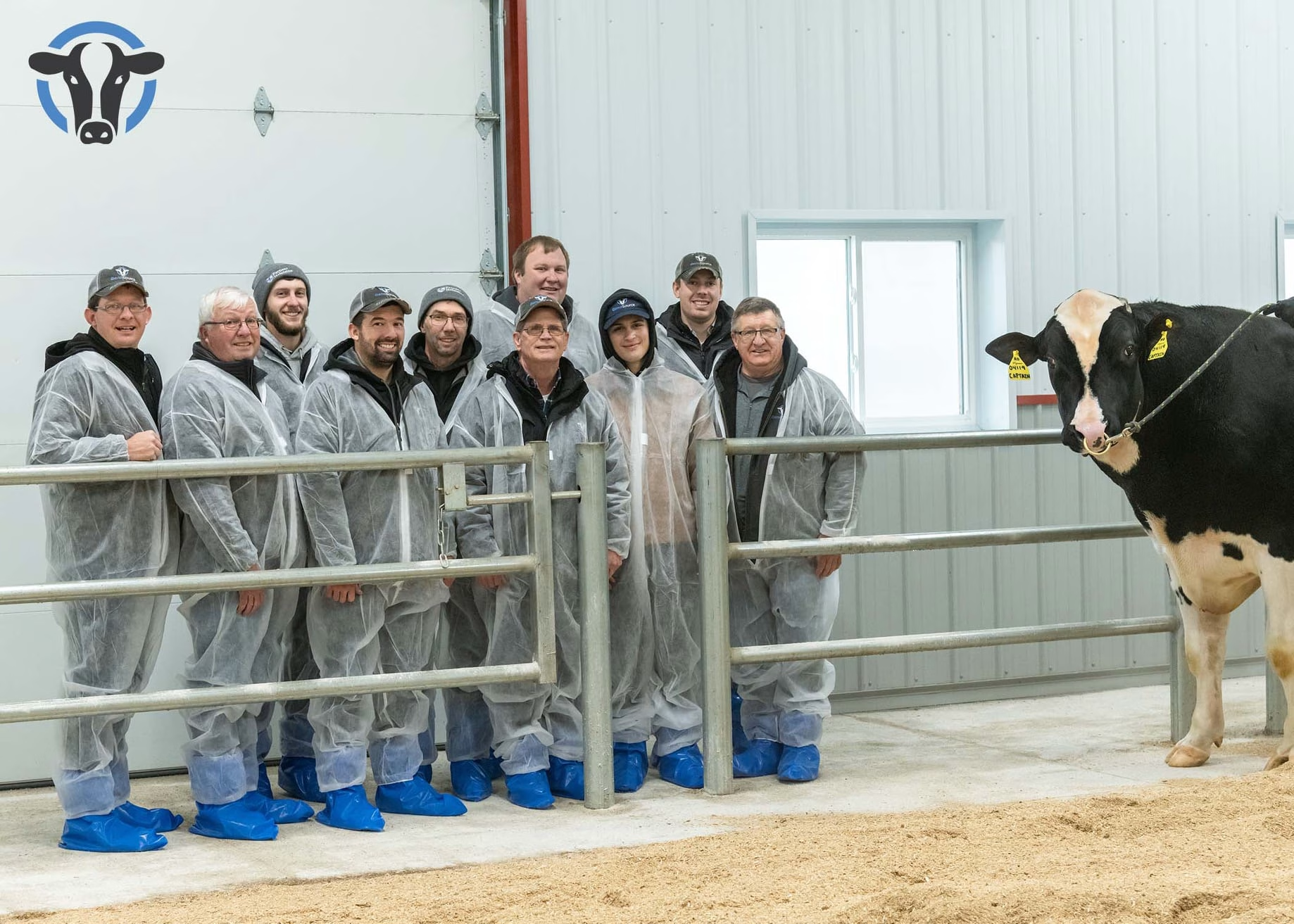
If Delicious is the queen of GenoSource’s genetic empire, then GenoSource Captain is undoubtedly its king. This seven-time #1 GTPI bull represents the pinnacle of the farm’s breeding philosophy, a living embodiment of their relentless pursuit of perfection.
Captain’s story begins with a strategic purchase: his sire’s dam, Peak Menna Ahead 850-ET, hailing from the legendary Oman Mirror lineage. But it was GenoSource’s meticulous planning that turned potential into reality. Captain was born through careful IVF pairings—first to produce is sire Farnear Tango Sabre 1973-ET, then to the STgenetics outlier, Hurtgenlea Richard Charl-ET to make Captain.
The results speak for themselves. “Captain’s consistency across generations is unprecedented,” Rauen notes, his voice brimming with pride. “His daughters dominate global herds while his grandsons, like Garza, the #2 TPI sire, continue the legacy.”
In GenoSource’s barns, you can see Captain’s impact firsthand. His daughters move gracefully; their udders testify to generations of careful breeding. The GenoSource team’s eyes are excited about what’s to come. In this small corner of Iowa, they’re not just breeding cows—they’re engineering the future of dairy, one perfect bovine at a time. (Read more: CAPTAIN: The Bull That Rewrote the Rules for Modern Breeding)
The Art and Science of Breeding: GenoSource’s Bold Vision
There’s often a divide between show ring glory and practical farm economics in dairy cattle breeding. But at GenoSource, they’re proving that beauty and productivity can go hand in hand, creating cows that are as stunning in the show ring as they are profitable in the barn.
From Show Ring to Milking Parlor: Not Just a Pretty Face
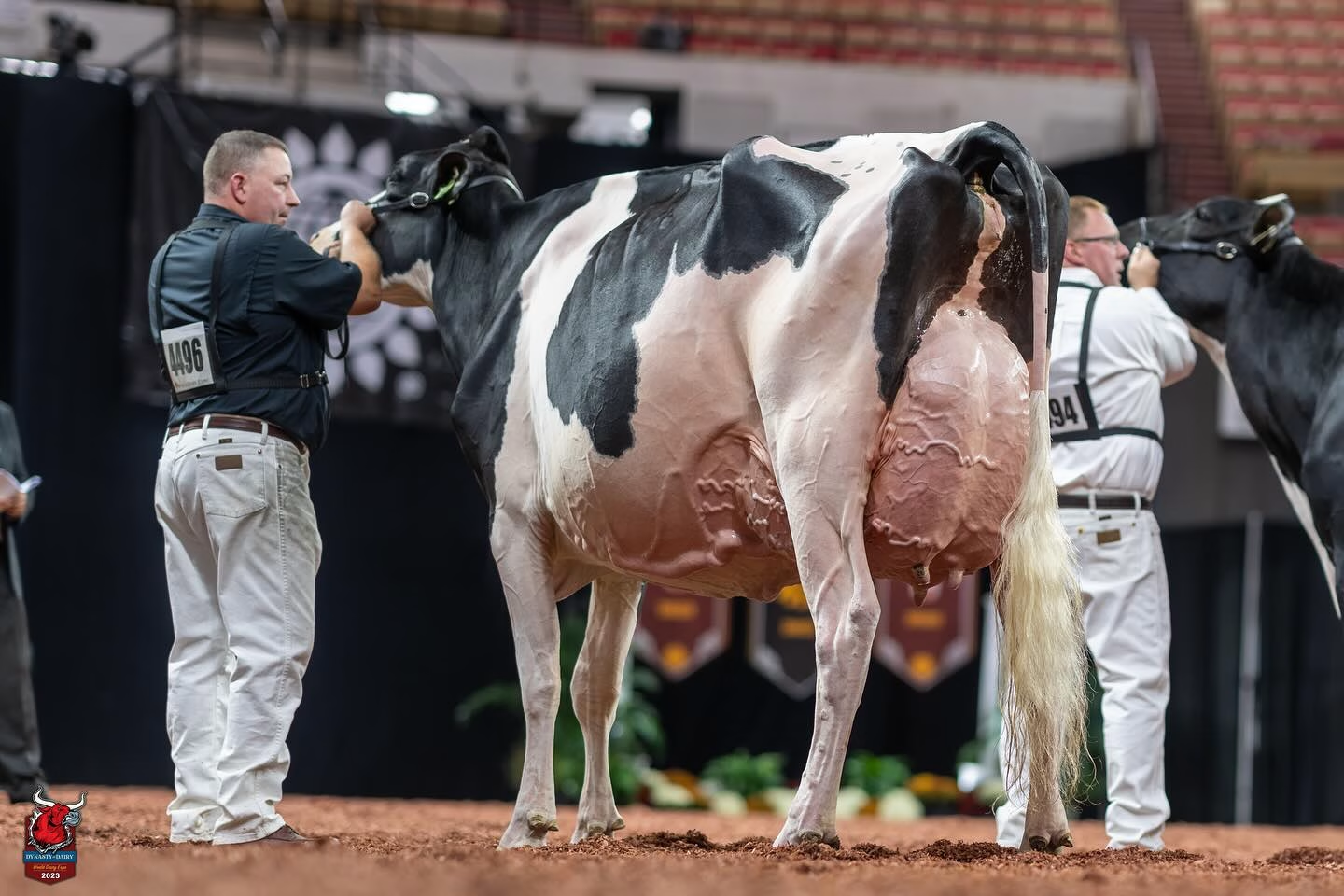
Picture this: a Holstein cow so magnificent she commands attention the moment she enters the ring. Her name is Ladyrose Caught Your Eye-ET, and she’s not just a pretty face. This three-time World Dairy Expo champion represents GenoSource’s bold step into the world of elite show cattle.
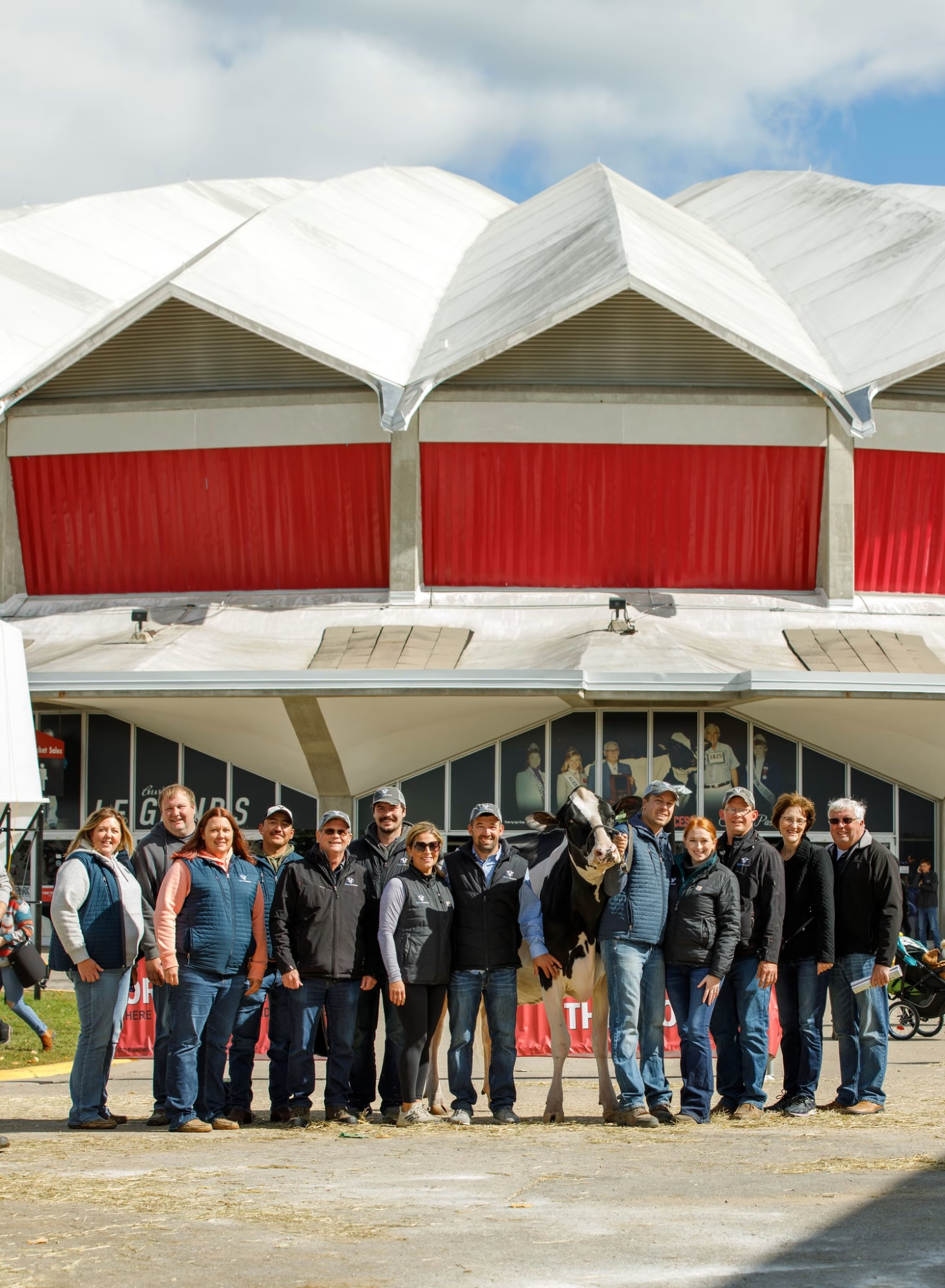
But for Kyle Demmer, GenoSource’s COO, it’s more than ribbons and trophies. “Show sires must enhance barn economics, not just trophy cases,” he states firmly. This philosophy combines the artistry of show cattle with the complex numbers of dairy production.
The results? They’re nothing short of spectacular. Sixteen of Caught Your Eye’s daughters, each scoring an impressive VG-87 or higher, are now productive members of dairy herds. Meanwhile, her sons are in high demand, and their genetics are sought after by AI companies around the globe.
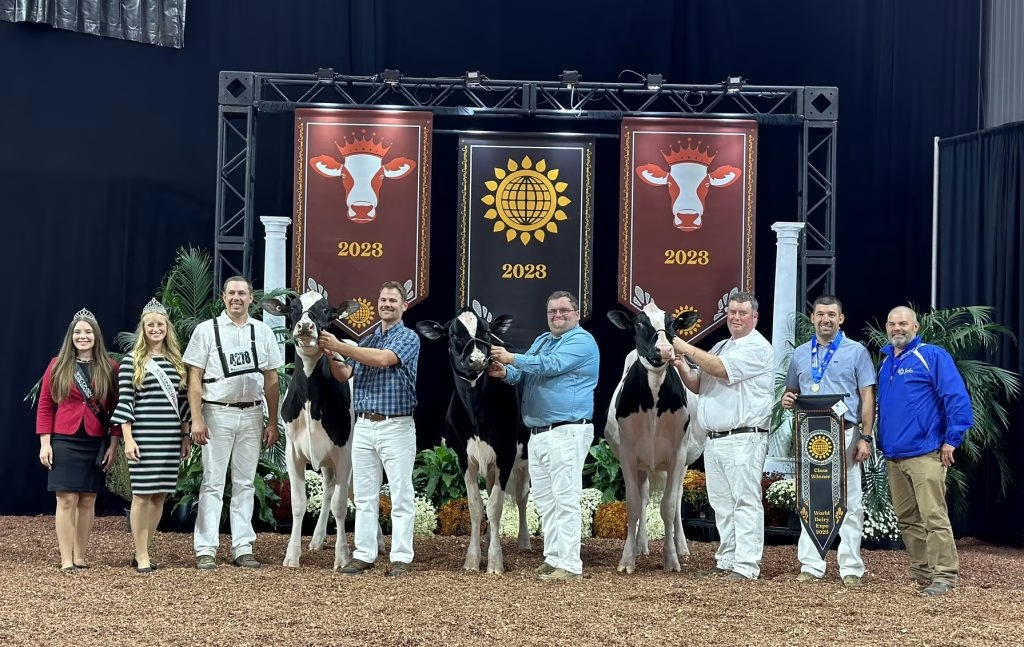
Diversity: The Spice of Dairy Life
While some breeders chase a narrow set of traits, GenoSource takes a different approach. They don’t just breed cows; they engineer diversity into the very fabric of the Holstein breed.
Imagine a breeding program bold enough to challenge conventional norms—this is precisely what GenoSource achieved by pairing type-focused Delta-Lambda sires with production-oriented bloodlines. Delta-Lambda, a popular bull often overlooked as a sire of sons due to his timing—born four years before the legendary Captain—was given a second chance in GenoSource’s innovative strategy. While some considered it “a step back” to breed Lambda to a Captain granddaughter, GenoSource embraced the unconventional pairing. The result was Genosource Bigwig (Lambda-Hanans-Captain), a bull that has become a global top seller. Bigwig exemplifies the best of both worlds: the elegance and conformation of type-focused genetics combined with the production power and balance demanded by modern dairy operations.
GenoSource’s commitment to engineering diversity into the Holstein breed continues to yield remarkable results, as evidenced by their latest standout, Genosource Benchmark. “Our highest bull is Genosource Benchmark. He is four months old and scores 3430 gTPI,” shares CEO Tim Rauen. This young bull is particularly noteworthy for being line-bred on the Lionel grandson Thorson; Benchmark’s sire is Thorson’s son Darth Vader, while his dam is Thorson’s daughter Brigade, descending from a Captain daughter that traces back to Genosource Brazen 40218 VG-85 (Nightcap), one of the farm’s four prominent donor families. Alongside Brazen, GenoSource’s genetic program is powered by three other influential donor families: T-Spruce Jaela 47718 VG-87 (Captain-Lionel), Genosource Dreaming Big EX-91 (Dynamo-Monterey), and Genosource Viral GP-82 (Captain-Nashville). These families exemplify GenoSource’s ability to balance innovation with strategic genetic diversity, ensuring adaptability and excellence across multiple market segments.
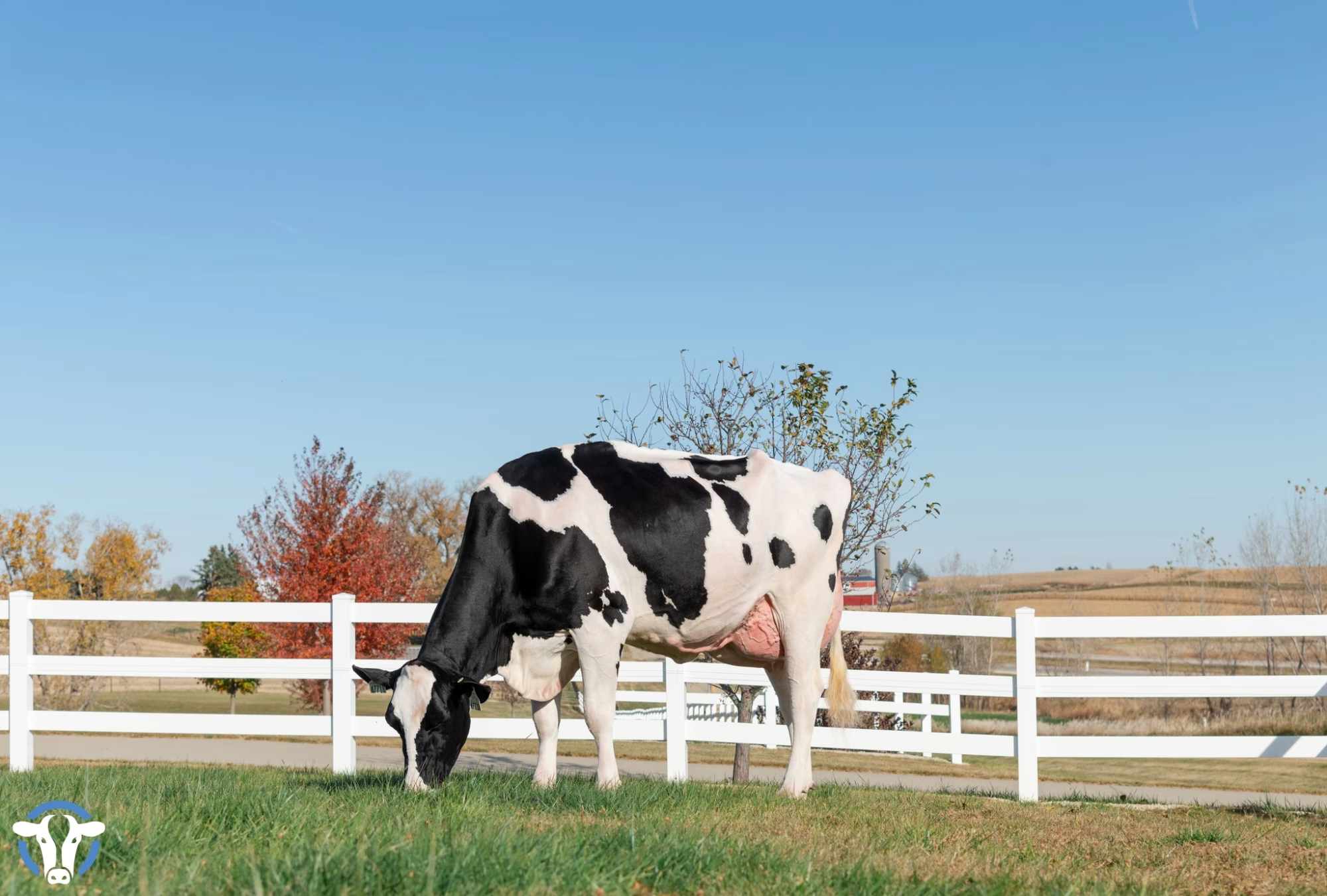
When asked about his favorite cows at GenoSource, Tim Rauen’s response is immediate: the previously mentioned T-Spruce Jaela. “Out of her, already more than 50 sons, grandsons, and great-grandsons have left for AI, so she will truly have a lot of influence,” Tim notes. He then highlights his second favorite, Bomaz-GS Captain 10767 GP-83 (Captain-Delson). “What an impressive cow! Modern stature, so much ‘dairy strength,’ and an unbelievably good udder,” he says enthusiastically. Her influence on the breed is poised to be significant, mainly through her Thorson son, Genosource King-P. “He is polled, scores 3269 gTPI, +0.85 gPTAT, and his calves are being born—a fascinating sire for polled genetics,” Tim explains. The conversation naturally shifts to another rising star: Genosource Kinky-P. “She’s just six months old, but I think she will change the Holstein breed for polled,” Tim predicts. Kinky-P is not only polled but also boasts a Net Merit of 1550—the highest in the breed for polled and non-polled animals—along with an impressive 3387 gTPI.
But GenoSource’s vision doesn’t stop there. They’re looking ahead, prioritizing traits like polled genetics, slick coats for heat tolerance, and superior feed efficiency long before the market caught on. It’s a strategy that’s paying off, positioning them at the forefront of emerging trends in dairy breeding.
GenoSource understands that one size doesn’t fit all in a globalized world. Therefore, they customize their genetic offerings for over 30 countries with unique needs and preferences. This level of personalization sets them apart in the international market.
Calculated Risks, Extraordinary Results
GenoSource isn’t afraid to take the road less traveled despite industry norms. Kyle Demmer says, “We’re not afraid to mate apparent opposites. Progress requires calculated risks.”
GenoSource’s willingness to push boundaries is evident in every aspect of its breeding program. From its million-dollar investment in show cattle to its diverse genetic strategies, GenoSource is rewriting the rules of dairy breeding.
As you walk through GenoSource’s barns, you can see the results of this bold approach. Cows that combine show-stopping beauty with record-breaking production. Bulls that carry the genetic potential to revolutionize herds across the globe. It’s a testament to what’s possible when art, science, tradition, and innovation unite perfectly.
In the ever-evolving world of dairy genetics, GenoSource is keeping up and leading the charge, one groundbreaking mating at a time. For dairy enthusiasts everywhere, this is an exciting glimpse into the future of the breed we love.

From Devastation to Innovation: GenoSource’s Phoenix Moment
In August 2020, the skies over Iowa darkened as a monstrous derecho swept across the state. Wind speeds rivaling those of a Category 4 hurricane tore through farms, leaving destruction in their wake. At GenoSource, half of the farm lay in ruins, a sight that would have broken the spirit of many.
But for GenoSource’s team, this catastrophe became an unexpected opportunity. Instead of rebuilding what was lost, they reimagined their entire operation. It was a moment of rebirth, a chance to transform adversity into advancement.
A Dairy of the Future
Step onto the rebuilt GenoSource farm today, and you’ll find yourself in what feels like a dairy of the future. At the heart of the operation stands a state-of-the-art 90-stall rotary parlor, a marvel of efficiency that enables thrice-daily milking. The gentle hum of the rotating platform is a constant reminder of the farm’s commitment to innovation.
But the real magic happens behind the scenes. Walk through the barns, and you’ll notice a noticeable difference in the air. That’s thanks to the tunnel ventilation system, guided by artificial intelligence, which maintains optimal climate conditions. It’s like a breath of fresh air for both cows and workers.
GenoSource isn’t just focusing on today’s needs and tomorrow’s challenges. By 2025, a methane digester will be operational, turning waste into energy and pushing the farm towards energy independence. This bold step towards sustainability showcases GenoSource’s long-term vision.
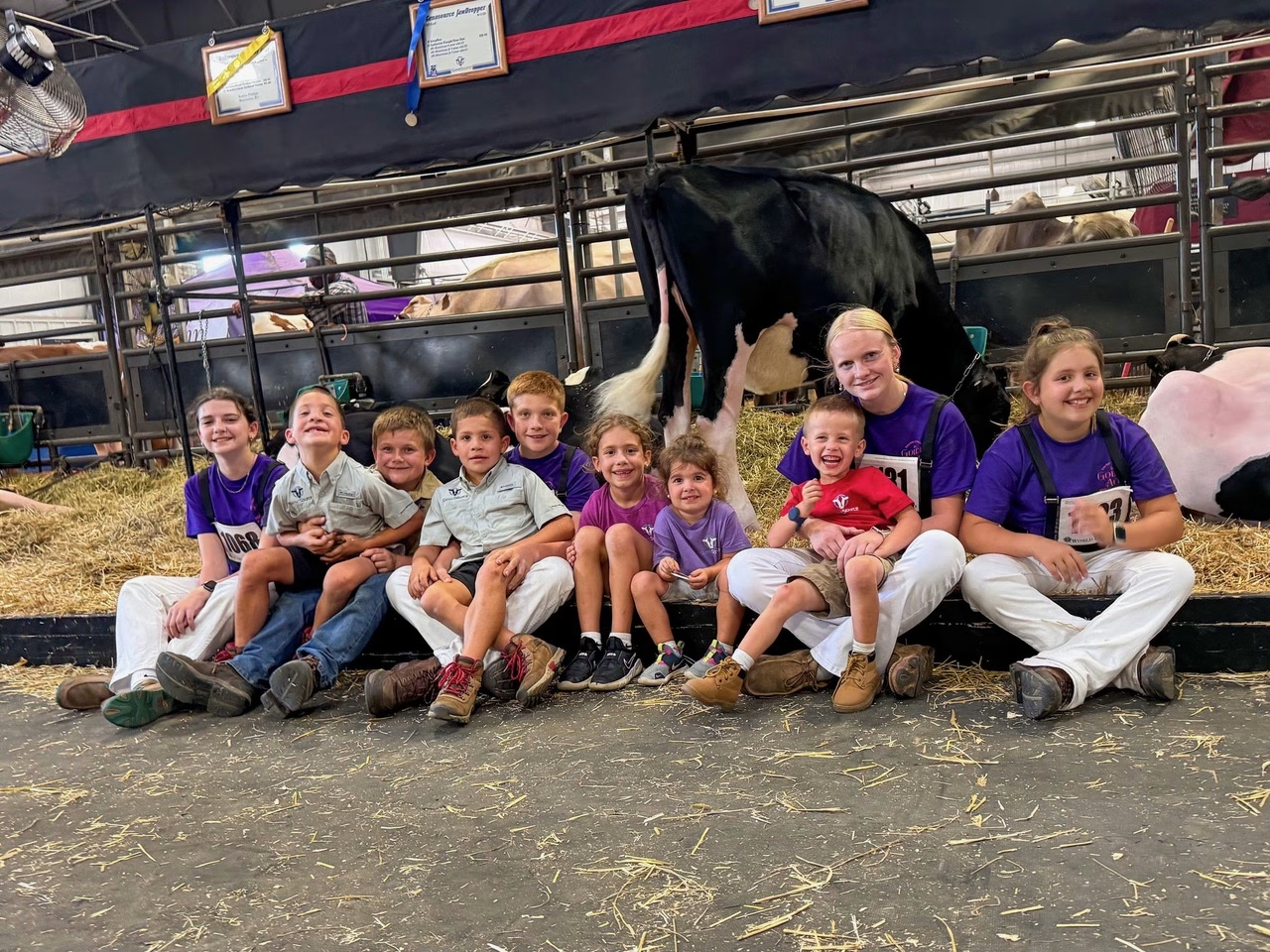
Technology with a Purpose
The most striking aspect of GenoSource’s rebuilt infrastructure is the seamless integration of technology. Each cow sports a smart collar that provides real-time health monitoring. It’s like having a veterinarian on call 24/7, ensuring that even the slightest change in a cow’s well-being is noticed and addressed promptly. GenoSource also uses FarmFit from ST, which provides live alerts and notifications of core body temperature from each bolus to their phone.
CFO Matt Simon, the architect behind many of these innovations, explains the philosophy driving these changes: “Technology serves two masters: cow comfort and human efficiency.” This simple statement encapsulates GenoSource’s approach: leveraging cutting-edge technology not for its own sake but to create a better environment for animals and humans.
Recognition and Responsibility
GenoSource’s forward-thinking approach hasn’t gone unnoticed. Their innovative rebuilding efforts earned them the prestigious Leader in Technology Award from the MILK Business Conference, a recognition that cements their status as pioneers in agricultural technology.
But with this recognition comes responsibility. GenoSource is now a beacon for other farms, showcasing what’s possible when tradition meets innovation. They’re not just rebuilding a farm but redefining what a modern dairy can be.
As you leave GenoSource farm, the impression that lingers is one of resilience and vision. From the ashes of destruction, they’ve built more than just a technologically advanced dairy—they’ve created a blueprint for the future of agriculture. This is a testament to the indomitable spirit of dairy farmers and a thrilling glimpse into the potential of our industry.
In the face of adversity, GenoSource didn’t just recover—it revolutionized. Doing so has shown us what’s possible when we dare to dream bigger, even in our darkest hours.
Green Pastures, Golden Opportunities: GenoSource’s Sustainable Success Story
In the rolling hills of Iowa, where corn and soybeans stretch as far as the eye can see, GenoSource is painting a new picture of dairy farming. It’s a landscape where profitability and sustainability aren’t just coexisting—they’re thriving together in perfect harmony.
The Sweet Smell of Success
Step onto the GenoSource farm, and you might notice something different in the air. It’s not just the crisp scent of fresh hay or the earthy aroma of well-tended soil. It’s the unmistakable scent of innovation, a fragrance changing the essence of dairy farming.
At the heart of this transformation is a simple yet powerful philosophy: What’s good for the planet can also be good for the pocketbook. GenoSource’s visionary CEO Tim Rauen says, “Our milk check tells the story. Higher pregnancy rates, lower vet costs, and premium components all trace to smart genetics.”
A Three-Pronged Approach to Sustainability
GenoSource’s commitment to sustainability isn’t just talk – it’s measurable, tangible, and impressively practical. Let’s break it down:
- Feeding Efficiency: Imagine cows that produce more milk while consuming less. That’s the reality with STgenetics EcoFeed, which has slashed feed intake by a whopping 12% per lactation. It’s like having your cake and eating it, too—or, in this case, producing more milk while using fewer resources.
- Methane Mastery: Soon, the farm will be home to a state-of-the-art methane digester. It’s projected to cut greenhouse gas emissions by 40% when operational. Imagine turning a potential environmental liability into a sustainable asset—that’s the forward-thinking that sets GenoSource apart.
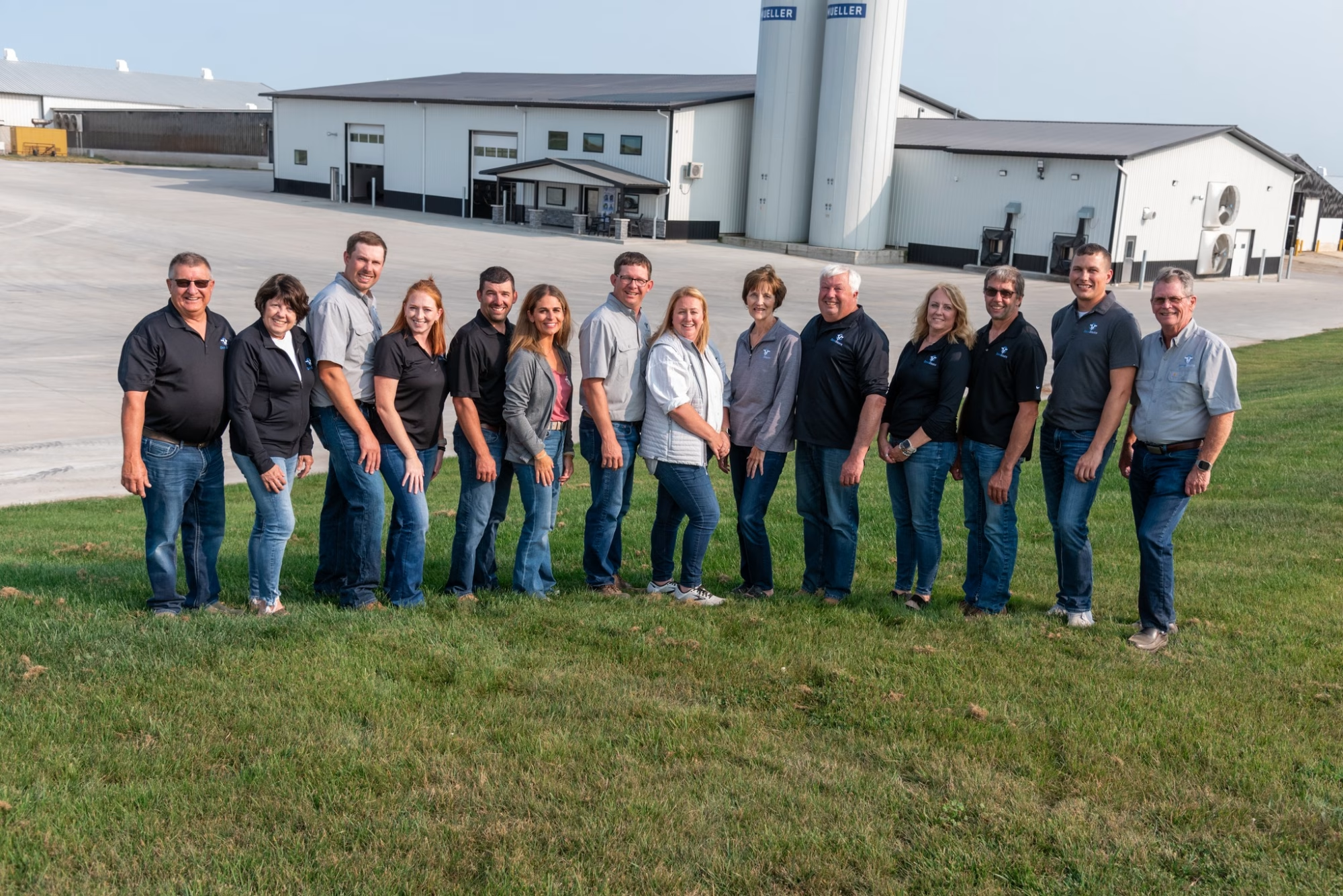
The Proof is in the Pail
But GenoSource isn’t just about impressive statistics but real-world results. Walk through their barns, and you’ll see cows that are healthier, more productive, and – dare we say it – happier. The proof, as they say, is in the pail.
Higher pregnancy rates mean more calves and a more sustainable herd. Lower vet costs translate to healthier animals and reduced antibiotic use. And those premium milk components? They’re the golden ticket to higher milk prices and increased profitability.
A Model for the Future
As you leave the GenoSource farm, you will be left with hope and possibility. This isn’t just a dairy—it’s a living laboratory, proving that sustainability and profitability can go hand in hand.
GenoSource is a beacon of innovation in a world grappling with environmental challenges. It is not just producing milk—crafting a blueprint for the future of dairy farming. In this future, every drop of milk tells a story of efficiency, sustainability, and brilliant genetics.
GenoSource’s journey is one to watch closely for dairy enthusiasts and industry watchers alike. In those Iowa fields, they’re not just raising cows—they’re raising the bar for what sustainable dairy farming can achieve.
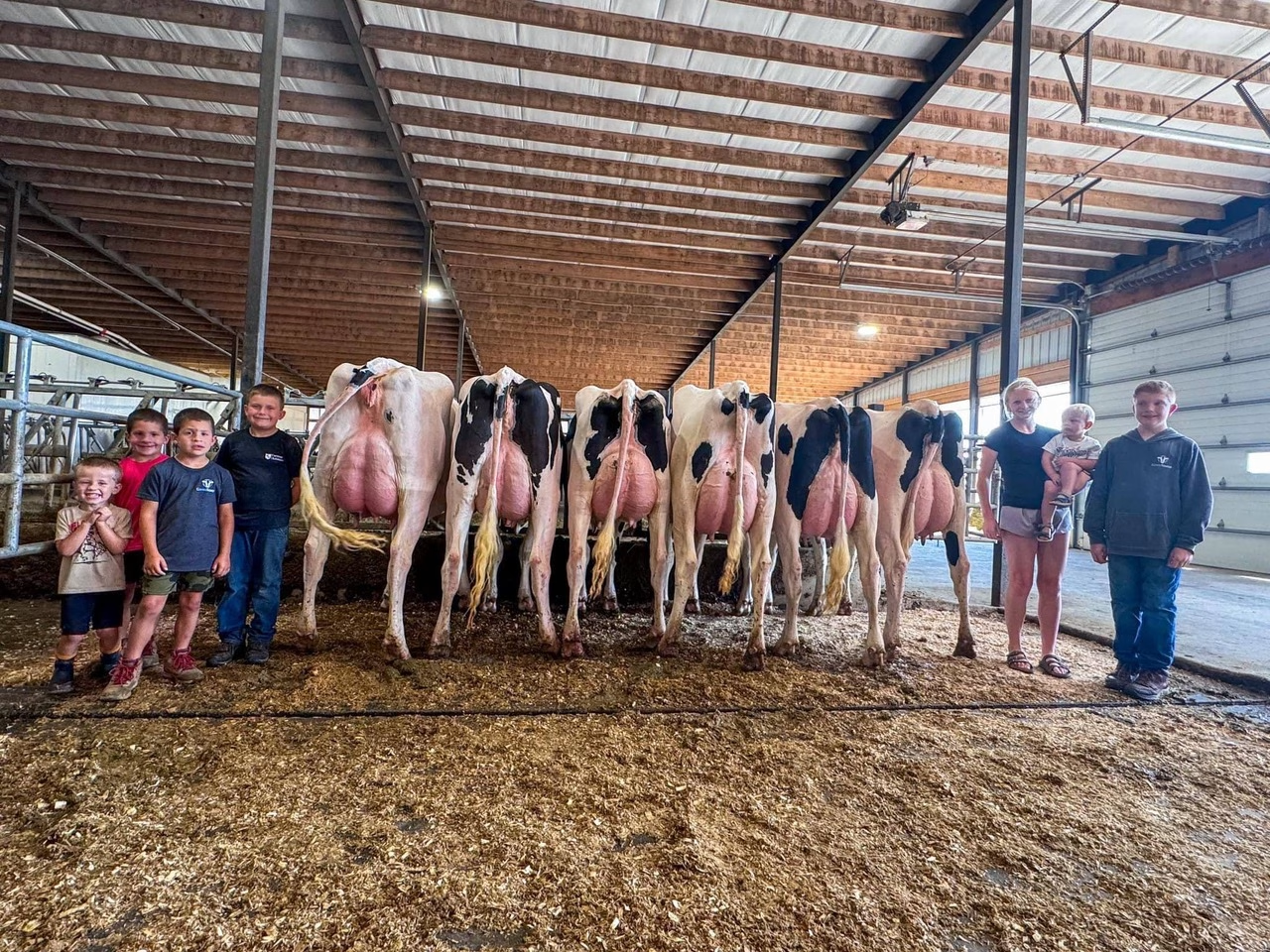
Charting the Course: GenoSource’s Vision for the Future
As the sun sets over the Iowa horizon, casting long shadows across GenoSource’s sprawling dairy operation, the team isn’t winding down—they’re gearing up for the future. In the quiet evening hours, you can almost hear the hum of innovation, the whisper of plans being made for generations to come.
A Legacy in the Making
Step into GenoSource’s planning room, and you’ll find walls covered with genetic charts and global maps. Here, the team isn’t just thinking about next year’s calves – they’re envisioning the perfect cow three generations from now. It’s a chess game played with genetics, where every move is calculated to shape the future of dairy farming.Matt Simon, GenoSource’s forward-thinking CFO, puts it best: “We’re not just building a better cow. We’re ensuring family farms thrive for generations to come.” This powerful statement encapsulates the heart of GenoSource’s mission: blending cutting-edge science with the timeless values of family farming.
2025: A Dairy Odyssey
As we look towards 2025, GenoSource’s ambitions are as bold as they are specific:
- Global Genetic Ambassadors: Imagine GenoSource embryos traveling to 15 new countries, carrying elite genetics to dairy farms worldwide. This is not just about expansion; it’s about sharing excellence and improving herds worldwide.
- The Captain’s Legacy: Imagine walking into an AI stud and seeing row after row of Captain-line grandsons – 50 or more. This isn’t just breeding; it’s creating a genetic dynasty that could reshape the Holstein breed.
- The Future of Calving: Envision a maternity barn where technology and nature work perfectly. Fully automated, it promises to revolutionize one of the most critical aspects of dairy farming.
Tradition Meets Innovation
GenoSource proves that you can honor tradition while embracing innovation in an industry where change often comes slowly. Their approach isn’t about discarding old ways but enhancing them with cutting-edge science and technology.
Walk through their barns, and you’ll see cows embodying generations of careful breeding alongside state-of-the-art monitoring systems. This is a vivid reminder that in GenoSource’s world, the cow always comes first through genetic improvements or technological advancements.
A Blueprint for Sustainable Success
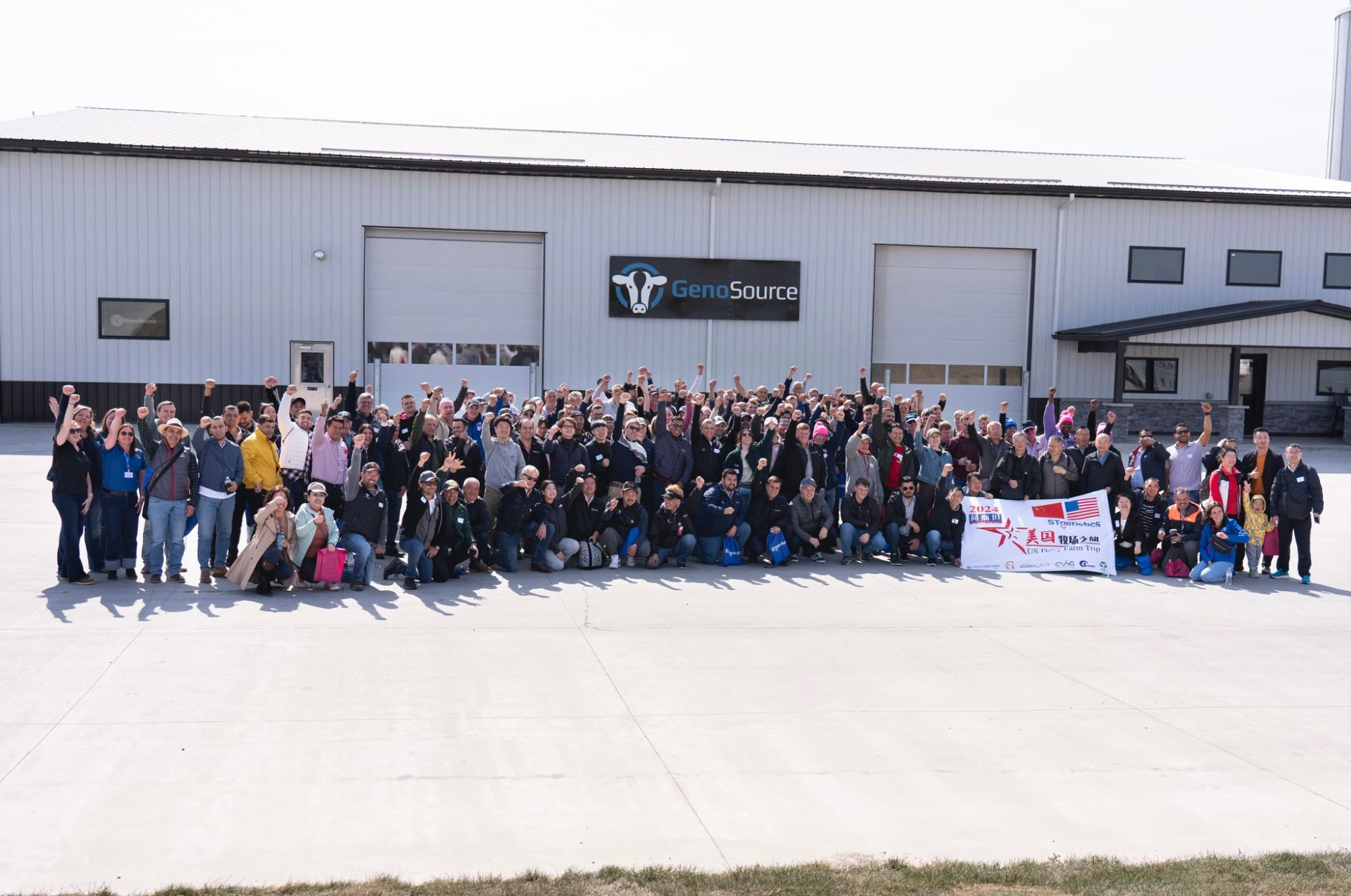
As our tour of GenoSource ends, we’re left with more than impressive statistics and ambitious goals. We’re given a glimpse into a future where dairy farming is sustainable and thriving.
GenoSource’s story, written in milk solids and genetic breakthroughs, isn’t just about building better cows. It’s about crafting a blueprint for agriculture’s future, where family farms can prosper for generations.
As we leave the farm, the setting sun paints the sky in hues of orange and purple. But for GenoSource, it’s not a sunset – it’s a dawn of new possibilities. In this corner of Iowa, they’re not just milking cows; they’re molding the future of dairy, one generation at a time.
The Bottom Line
As GenoSource stands at the vanguard of dairy genetics in 2025, its journey from eight ambitious farming families to global innovators illuminates a path forward for an industry at a critical crossroads. With concrete plans to expand embryo exports to 15 new countries, launch over 50 Captain-line grandsons into AI programs worldwide, and complete its fully automated maternity barn this year, GenoSource isn’t just theorizing about the future—it’s actively creating it.
Their approach represents a masterful symphony in which cutting-edge technology harmonizes with generational farming wisdom. As Matt Simon powerfully states, “We’re not just building a better cow. We’re ensuring family farms thrive for generations to come.” This philosophy carries profound implications in an era when family farms face unprecedented pressure from industrial agriculture and climate challenges.
GenoSource’s commitment to sustainability demonstrates how environmental stewardship and profitability can reinforce rather than oppose each other. Their STgenetics EcoFeed program, reducing feed intake by 12% per lactation while maintaining production, offers a blueprint for resource efficiency that the entire industry would be wise to study.
As we witness their three-generation breeding strategy unfold, we must ask ourselves: Are we merely spectators to this agricultural revolution, or will we become active participants? What would happen if GenoSource’s balanced approach to innovation—respecting tradition while embracing technological advancement—became the industry standard rather than the exception? Could their family ownership model, coupled with scientific precision, be the key to preserving the cultural heritage of dairy farming while meeting the demands of a resource-constrained future?
The choices we make today—whether dairy producers, industry professionals, or consumers—will echo through generations of farmers and countless dairy herds. GenoSource has shown us that technology and tradition need not be adversaries; they can be powerful allies in creating a more sustainable, productive, and humane dairy industry. The question remains: Will we have the courage to follow their lead and reimagine what’s possible for the future of dairy farming? The answer may determine whether family farms like GenoSource become relics of the past or beacons guiding us toward a more resilient agricultural future.
Key Takeaways
- Innovative Origins: Founded in 2014 by eight farming families, GenoSource aims to create modern Holsteins that excel in free-stall environments, are highly feed efficient, and have minimal health issues.
- Cutting-Edge Technology: GenoSource accelerates genetic progress through genomic testing, IVF, and sexed semen. It produces 18,000 embryos annually and places 200 bulls into AI annually.
- Sustainability Focus: Initiatives like STgenetics EcoFeed (12% feed reduction), a methane digester (40% GHG reduction projected) showcases their commitment to environmental stewardship.
- GenoSource Captain’s Legacy: This seven-time #1 GTPI bull has revolutionized the breed with exceptional consistency in daughters and sons, influencing herds worldwide.
- Elite Show Cattle: Investments in champions like Ladyrose Caught Your Eye-ET have positioned GenoSource as a genetics leader who balances show-ring success with barn practicality.
- AI Companies GenoSource Partners With: In 2024, GenoSource sold around 200 young sires to various AI companies, marking a significant shift in its strategy. Previously focused on its breeding partner, STgenetics (STg), GenoSource expanded to sell bulls to ten other AI companies, including Select Sires, Semex, ABS, Urus, AI Total, Blondin, Ascol, CRV, and Westlock Genetics. This diversification aims to give its genetics broader global opportunities.
- Polled Genetics Program: GenoSource is advancing polled genetics with standout animals like Genosource King-P and Kinky-P. King-P is a polled bull with a GTPI of +3269 and impressive traits like +0.85 gPTAT. Meanwhile, Kinky-P is described as a game-changer for the Holstein breed. It is the #1 Net Merit polled animal (non-polled combined) with a Net Merit of +1550 and GTPI of +3387. These efforts highlight GenoSource’s focus on integrating polled genetics into its breeding program to meet market demands for hornless cattle.
- Global Reach: With genetic exports to 30+ countries, GenoSource customizes offerings for diverse markets while hosting international visitors to share expertise.
- Family-Owned and Operated: Fully family-run, each partner brings unique expertise, fostering collaboration and innovation while maintaining strong values.
- Future Goals: By 2025, GenoSource will expand embryo exports to 15 new countries, launch 50+ Captain-line grandsons into AI, and complete a fully automated maternity barn.
- Recognition for Innovation: Winning the Leader in Technology Award reflects their genetics, infrastructure, and advancements in cow comfort.
- Vision for Generational Breeding: GenoSource plans matings three generations ahead to ensure elite genetic growth while maintaining diversity across traits and markets. Where the indexes of the highest animals turn out to be about 150 TPI points higher each year!
Summary
GenoSource, founded in 2014 by eight farming families in Iowa, has rapidly emerged as a powerhouse in dairy genetics, revolutionizing the industry through innovative breeding strategies and cutting-edge technology. Led by CEO Tim Rauen, the company has achieved remarkable success, producing 18,000 embryos annually and placing 200 bulls into AI each year. Their flagship bull, GenoSource Captain, a seven-time #1 GTPI sire, exemplifies their breeding philosophy of combining high production with longevity and efficiency. GenoSource’s commitment to sustainability is evident in its initiatives like STgenetics EcoFeed and plans for a methane digester, which aligns profitability with environmental stewardship. With a global reach extending to over 30 countries and ambitious goals for 2025, including expanding embryo exports and launching more Captain-line grandsons, GenoSource is not just breeding better cows—they’re shaping the future of dairy farming while ensuring family farms thrive for generations to come.
 Join the Revolution!
Join the Revolution!
Bullvine Daily is your essential e-zine for staying ahead in the dairy industry. With over 30,000 subscribers, we bring you the week’s top news, helping you manage tasks efficiently. Stay informed about milk production, tech adoption, and more, so you can concentrate on your dairy operations.







 Join the Revolution!
Join the Revolution!

